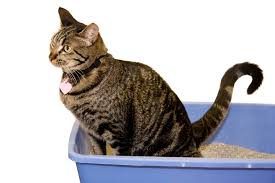George The Skateboarding Bulldog
Nadine Singel
 Nadine Singel never tried to train her bulldog to skateboard. When you see him surfing the concrete with such passion and skill, it's hard to believe that he picked up the sport by watching neighborhood kids skateboarding. You'll love George's story.
Nadine Singel never tried to train her bulldog to skateboard. When you see him surfing the concrete with such passion and skill, it's hard to believe that he picked up the sport by watching neighborhood kids skateboarding. You'll love George's story.
When he was about eight weeks old, Nancy Singel got her Bulldog George a skateboard. She just wanted to see if he would enjoy it. She knew about Tillman, the famous bulldog that kind of got the trend going, so she thought she would try it with George.
It started out with George just pushing around the board a little bit. Then one day she had him out by a skate park and he saw a kid ride. He connected the dots and put two and two together. The next thing you know, he was off and skateboarding. He's improved ever since.
George loves skateboarding but is not much of a television watcher. However, if someone comes on the television riding a skateboard, he is right there. Nancy has to be careful, as he might even destroy the television, as he gets so excited.
When its time to stop riding for the day, because George loves riding so much, Nancy has to wrestle the board away from him. In fact, it takes two, Nancy and her husband. George will see the two of them coming and will actually wrap his front legs around the board so that they can't take it from him. When they finally do get it away from him, they have to hide it in the trunk of their car, because if they hid it in the house he would destroy everything trying to find it.
You can find online videos of George riding a skateboard. He doesn't just go straight, he has actually learned how to lean into it and steer it the way he wants to go. He really knows what he's doing. As mentioned, George was never trained to do this, but picked it up after watching kids at the skateboarding park.
 George can be a little rough on his skateboard and he'll pull the wheel when he wants to flip it. He just pulls the wheel up to where he needs it to go. That's how he pulls it around where he wants it to be and then gets on. As a result, his saliva and everything will get in the bearings of the wheels and they will have to be replaced from time to time.
George can be a little rough on his skateboard and he'll pull the wheel when he wants to flip it. He just pulls the wheel up to where he needs it to go. That's how he pulls it around where he wants it to be and then gets on. As a result, his saliva and everything will get in the bearings of the wheels and they will have to be replaced from time to time.
Because George enjoys riding a skateboard so much, Nancy wanted to see if he enjoyed doing other extreme sports. She then entered George in a surfing competition in Huntington Beach, since skating and surfing are very similar. While George didn't win, he did pretty good considering it was his first time.
Nancy splits her time between Washington States and Las Vegas. Since there is no ocean in Las Vegas, she took George to the dog beach in San Diego with his brand new surfboard to give it a try. It was no surprise to Nancy when George took to surfing right away. Nancy claims she doesn't know how to do any of these things, but that somehow George must have channeled something from another life or something because he is just totally in tune to these kind of sports.
George hates going for walks, so Nancy takes him out for a roll. During his 'rolls' he managed to gather a little fan club at a retirement home. One day when they were in Washington, Nancy found a great parking lot at a retirement home for George to ride that was protected from cars. The next thing she knew there were these sweet people from the retirement center who were just coming out to watch George. It made everyone happy so George goes there on a regular basis.
It was never Nancy's intention to make George famous, but states his social media inbox is fuller than hers! In fact, he has been approached for bigger and better things. So keep your eyes and ears open, you might be seeing George soon, maybe even on the big screen!
Visit Website
Older Dogs Need Love Too
Kim Skarritt, Silver Muzzle Cottage Dog Rescue & Hospice
 Senior pets are often the most undesirable pets to adopt. But seniors actually make great pets, so says Kim Skarritt. She's committed to making the last months of a pet's life comfortable and happy.
Senior pets are often the most undesirable pets to adopt. But seniors actually make great pets, so says Kim Skarritt. She's committed to making the last months of a pet's life comfortable and happy.
Kim Skarritt is the founder of Silver Muzzle Cottage Dog Rescue & Hospice Program. They are a rescue for homeless senior dogs, primarily those that have three years or less to live based on their breed. They are also a hospice service. They take dogs in who have a limited amount of time, as determined by a licensed veterinarian, whether they have two days, two weeks or two months.
The whole point of the Silver Muzzle Cottage Dog Rescue & Hospice Program is to make sure that these dogs leave this world knowing that somebody has loved them and cared about him and that their lives matter to somebody.
Roughly 50-percent of the dogs that end up in their rescue comes from shelters. The other 50-percent generally are coming from homes, where either the owner has passed away or they went into a nursing care facility and nobody in the family wanted the dog.
Kim loves the senior dogs. So when somebody comes to her and says they want to adopt a young puppy, she encourages them to think about a senior animal.
 She tells them to first take a look at their lifestyle, which really kind of applies to just about anybody looking to take a dog into their home and their environment. Not enough people will actually do that, which is one of the reasons why so many dogs end up in shelters. This is because when people get dogs, they don't take into consideration their lifestyle or the needs of the dogs physically and otherwise. So they end up taking on a dog that really is not a good fit for them and it becomes difficult. So off to the shelter it goes.
She tells them to first take a look at their lifestyle, which really kind of applies to just about anybody looking to take a dog into their home and their environment. Not enough people will actually do that, which is one of the reasons why so many dogs end up in shelters. This is because when people get dogs, they don't take into consideration their lifestyle or the needs of the dogs physically and otherwise. So they end up taking on a dog that really is not a good fit for them and it becomes difficult. So off to the shelter it goes.
Kim tells us about a gentleman who was 81 that came to them and said he wanted a three or four year old dog. Kim told this man that they needed to have one of those heart-to-heart real life conversations. She wanted to be tactful, but she just came out and said, "Look, the reality is that your life span is going to be somewhat limited at 81 years old. You're not going to live 20 more years you know. And so if you take a dog on that's three that dog, depending on the breed, may live to be 15. That's 12 years from now. So can you guarantee that you are going to be around for this dog when you're 93 years old?" She then told him to think about taking on a dog who's nine or 10 and the two of them can grow old together. And so he did. He ended up adopting a 10-year-old dog.
People are starting to see that these senior dogs are great. They're calm, they're sweet, they're loving. They don't need much. They really just want to be loved and cared for and have all their essential needs met and they're usually housebroken. And if they come out of a bad situation where they have been neglected or abused, they are grateful and you can see it. Kim states it's an amazing thing to look at a dog and say, "That dog's not going to make it two weeks and then all of a sudden here it is two years later he is alive and well and thriving because he has been loved for two years." It's just absolutely amazing.
Their average cost per dog is about $350 because they provide full veterinary care for all dogs when they come into the rescue. A lot of times older dogs, especially if they haven't been cared for by their previous owners, may have things that nobody is aware off, so a full blood panel is done. They will even do dental work on them. They want to get them as close to a clean bill of health as they can, so when they adopt them out, they can tell the new owners exactly what their needs are.
The Silver Muzzle Cottage Dog Rescue & Hospice Program relies on donations. They do apply for grants as they become available and they're eligible, but most of it is just lots of fundraising.
Visit Website
How To Achieve Litter Box Success - Dr. Debbie
 It's important to realize not all cases of inappropriate elimination are a "behavior" problem. In confirmed behavioral driven house soiling cases, 20-percent of the cats also had a contributing medical condition at the time. So even if it sounds like a behavioral problem, see your veterinarian to ensure your cat isn't the 1 in 5 that has discomfort, infection, or other health problems influencing her litter box use.
It's important to realize not all cases of inappropriate elimination are a "behavior" problem. In confirmed behavioral driven house soiling cases, 20-percent of the cats also had a contributing medical condition at the time. So even if it sounds like a behavioral problem, see your veterinarian to ensure your cat isn't the 1 in 5 that has discomfort, infection, or other health problems influencing her litter box use.
Drawing Kitty To The "Right" Spot
Check the condition of the box - is it urine stained on the bottom? Throw it out and get a new one. Keep the box clean by scooping twice daily and by performing a complete litter change out twice a week for non-clumping litter or every 2-3 weeks for clumping varieties.
To entice kitty back to the litter box try a litter box attractant like the herbal-based cat litter additive called "Cat Attract."
Multi-cat homes or those with outdoor cats nearby should use pheromone (scent hormone) products to ease social stress and facilitate litter box harmony.
Kitty Eliminates Near, But Not Quite In The Litter Box
Your kitty is telling you that she understands what you want her to do, but something isn't quite right in the litter box environment. First start with providing a larger box, even if this means buying a plastic under bed storage box for this purpose. Look for one sized 18 x 36 inches in size.
Remove any litter box covers. Revisit the traffic flow in the litter box area. Ensure the box is in a quiet, low traffic area. Keep the box unquestionably clean.
Is Your Cat Urinating In Tubs Or Sinks?
Chances are your cat has urinary tract inflammation or infection. The cool surfaces provide relief to the inflammation or discomfort of a medical condition. See your veterinarian for a urine evaluation and treatment since environmental changes alone will not stop the behavior.
To preventing further episodes, decrease access to tubs and sinks, close doors to bathrooms, or fill the bottom of sinks and tubs with a small amount of water.
Kitty Eliminates On Throw Rugs And Won't Use Litter Box
Your cat has already made a litter preference. Perhaps the texture of carpet is more appealing than the litter used. Provide a litter box smorgasbord. This is when you provide multiple litter pans at the same time, each with different litter varieties such as clay, clumping, and natural pine litter. Be sure to include one litter box with sections of throw rugs or carpet remnants lining the bottom. During this time, remove all throw rugs from the house or block kitty's access to those areas.
If kitty demonstrates a litter preference, switch her litter boxes to that style of litter.
If kitty chooses the rug-lined box, then continue providing carpet lined litter boxes to establish a good pattern of repeated box use. Gradually start sprinkling small amounts of cat litter in the box on top of carpet surface. With time, many cats can be retrained to accept the box as the carpet is phased out and just litter remains.
 Prevent Returning To Scene Of Crime
Prevent Returning To Scene Of Crime
Clean all house soiling accident sites with an enzyme based pet cleanser. The enzymes break down the chemical component of the odors, and do more than just cover up with scents. Do not use ammonia based cleansers on accident areas - doing so is counterproductive. (Remember that urine contains ammonia products.)
Cats dislike eating in areas that they eliminate, so place food and water bowls in the site of the accidents, or try placing pieces of aluminum foil in areas to deter kitty's use.
Citrus scents are offensive to cats and can be an effective cat deterrent. Use citrus or potpourri scented air fresheners in the area. If your cat is eliminating in house plants, place lemon or orange peels in the pot to make the area less attractive. And of course, make sure you aren't using citrus scented cleaners on the litter pan!
To keep your kitty away from areas she continues to eliminate on, use double sided sticky tape or turn plastic carpet runners upside down. Another option is to invest in motion-activated devices that spritz out citronella or puffs of air when the electronic eye picks up motion in the off-limits area.
The Tough Reality
For some cats, environmental changes aren't enough and drug therapy may be a necessary tool. But remember that behavioral medications aren't a shortcut - drug therapy must be used with veterinary monitoring and in conjunction with environmental changes.
Want to hear some bad news? In households struggling with many years of feline house soiling, it may be necessary to discard urine marked furniture, change out carpet, carpet pads, and treat sub-flooring to effectively remove scent triggers for future elimination issues. It may sound extreme, but it can be important step to achieve faithful feline litter box success.
Featured veterinarian known as "Dr. Debbie" on national pet radio program, Animal Radio. Ebook author of "Yorkshire Terriers: How to Be Your Dog's Best Friend"; "Pugs: How to Be Your Dog's Best Friend"; "Mini Schnauzers: How to Be Your Dog's Best Friend"; and "Shih Tzu: How to Be Your Dog's Best Friend." Dr. Debbie's books.
Visit Website
5 Important Things To Know About Rabies
Robert Semrow, Listomania
 Rabies is something that many pet parents have heard of, but may not truly understand what it is or how it can affect us and our pets.
Rabies is something that many pet parents have heard of, but may not truly understand what it is or how it can affect us and our pets.
Recently, I was having a conversation with some pet guardians who brought the topic up and had many more questions than answers. So, in the interest of knowing more to do better, I bring you 5 important things to know about Rabies.
To begin with, rabies is something that can be encountered in most places of the world. With the exception of Antarctica, it has been reported on all other continents. It's a viral disease that affects the central nervous system and can infect any warm-blooded animal. Rabies is typically spread by contact with the saliva of an infected animal through a bite or an exposed wound or scratch.
Since Rabies attacks the central nervous system it's symptoms can be greatly varied from animal to animal. Signs may include a heightened state of anxiousness, aggressiveness or even more friendly than usual. As the illness progresses, infected animals will show a higher sensitivity to sound and light. In it's final stages, paralysis of the nerves that control the head and throat of animal occurs. Sadly, an infected pet will likely experience respiratory failure and pass over the Rainbow Bridge.
While there is no cure for rabies, there are vaccines available. Most states require rabies vaccinations. Other entities like boarding facilities and even veterinary offices may require them as well. This is for the safety of not only the pets, but for the people they come in to contact with as well. If you are uncertain about your pet or another pet, work with your veterinarian to decide the best course of action. Remember, you have a responsibility to protect your pet and the people and pets that your pet interacts with.
 Another important reminder is to always keep your rabies certification in a place that is easily accessible. In an emergency, you may need to provide this certificate for your pet to be allowed to shelter with you.
Another important reminder is to always keep your rabies certification in a place that is easily accessible. In an emergency, you may need to provide this certificate for your pet to be allowed to shelter with you.
Additionally, if you live in an area where wildlife can interact with your pets, be extra vigilant. Raccoons, bats, skunks, foxes and more carry rabies and can easily transmit it to your curious pet. If you suspect your pet may have been bitten or even scratched by any animal, consult with your vet immediately out of an abundance of caution and care.
This is one of those illnesses that you can be very proactive with. Have a strategy and understanding of the risks to you and your pets. Work with professionals to put together the best safety course of action, as this is a serious illness that can have fatal consequences.
Share your Rabies pet tips on our Animal Radio Facebook Page.
Visit Website
Animal Radio News - Lori Brooks
 Dog Poisonings On The Rise in Britain
Dog Poisonings On The Rise in Britain
The number of dog poisonings rose by 73-percent in Great Britain, according to reports collected by the RSPCA. The group says every year it receives reports by members of the public claiming people have left out meat laced with poison in parks and that pets have been deliberately poisoned with antifreeze. They add that pet owners also need to be careful when using chemicals. That means being careful where they use those chemicals and also careful how they dispose of them. Some examples of chemicals poisonous to animals include antifreeze, rodent poisons and snail or slug bait. The RSPCA stresses disposing of them properly and pleads with people not to dump those chemicals just anywhere, like on roadsides or in a park, just to avoid disposal ordinances in most cities and towns.
History of Cats
Today, cats are found on every continent around the globe except Antarctica. But that wasn't always the case. So, how did cats make it across oceans and into homes all around the world? Apparently the secret is held in ancient cat DNA, which is being studied. In a nutshell, it all started around 10,000 years ago in what's now the country of Turkey where wild cats were used as mousers and rodent control for farmers. After that, by 2,500 BC cats had spread to Cyprus. Over the next few thousand years they accompanied their humans north into Bulgaria and Romania. By 800 BC, felines were found in Egypt. Later those Egyptian cats became popular among the Romans and Vikings who took them along on their ships to control rodents. Those voyages by sea put cats on the shores of Africa, Europe and Asia where they later hopped on ships headed to America. Today, a full one-third of American homes have at least one cat. That's about 93.5 million house cats in the US, alone.
 Most Popular Pet Costumes
Most Popular Pet Costumes
If you are one of the many people who just love Halloween, you may already have your pet's costume. It turns out that this year you'll likely be seeing a lot of cats that look like dogs and dogs that look like cats. The number one pet costume is a pumpkin. Number two is a hot dog costume, followed by lions, pirates, bumblebees, devils, batman characters, witches and Star Wars characters. About 20-percent of pets will be parading around in costumes this Halloween.
Girl Mistakes Petco for Petco But Gets Hamster Anyway
In Washington DC, a little girl thought she was writing the pet supply store Petco and asked them for a hamster. However, her letter accidentally went to a local utility company called Pepco. You might think all would have been lost but the 8-year-old got her hamster anyway from the nice folks at the power company. She named it Brick Hamster. Her letter was pretty cute saying, "If I reseive a hamester, I will do better in school, make more friends and become responsible." She also drew a big picture of a bucktoothed hamster at the bottom of the page.
Make Pet Treats - Make Money
Anyone looking to cash in on the booming pet products business would be smart to investigate making pet treats, which have outpaced both dog and cat food in the last five years in the US. If you're thinking of making pet treats, keep in mind that quality ingredients is top of mind. Forty-percent of US pet owners check the ingredient list when purchasing new pet food or treats and 64-percent say they would be interested in treats made with premium ingredients, such as all-natural or organic. Around 75-percent of pet owners say that treats are their way of showing their pet love, but 25-percent of those people give treats they think are healthy or health related like dental bones or hair ball treats.
 Listen to the entire Podcast of this show (#1195)
Listen to the entire Podcast of this show (#1195)





